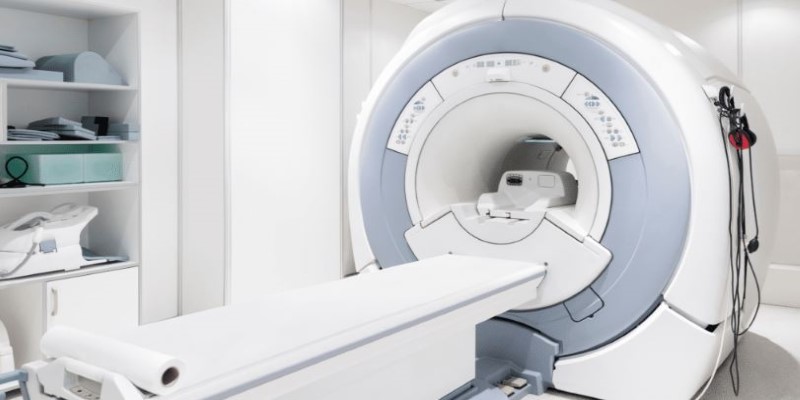The ability of machines to recognize and categorize images has transformed artificial intelligence (AI), making image classification a crucial part of modern technology. At its core, image classification allows a computer to analyze an image and assign it a label, similar to how humans identify objects at a glance. This technology has become the foundation for countless applications, from diagnosing diseases in medical scans to improving search engines.
While the concept may seem straightforward, the process behind image classification involves complex mathematical models and vast amounts of data. Understanding how it works, its real-world applications and the challenges it faces sheds light on how AI continues to reshape industries.
How Image Classification Works?
Image classification is driven by machine learning, particularly deep learning models known as neural networks. These models are trained on massive datasets, allowing them to learn the distinguishing features of different objects. The most widely used type of neural network for image classification is the convolutional neural network (CNN), which is designed to process visual data efficiently.
When an image is input to a CNN, the computer does not "view" the image like a human. Rather, it reads the image as digital information, examining pixel patterns and configurations. The neural network applies various layers of filters, each designed to identify particular details. Simple features such as edges and textures are picked up by the first levels of layers, with more complex shapes and objects picked up by lower layers. By the point when the picture reaches its last stage, the AI model makes a comparison between its interpretation and learned patterns so far and places the image in a category.
This entire process is made possible through training, where the AI is fed thousands or even millions of labeled images. Over time, the system refines its ability to differentiate between objects, improving its accuracy. However, training requires powerful computing resources and carefully curated datasets, ensuring the AI does not develop biases or errors.
Applications of Image Classification
Image classification has now become a vital component of several industries, adding efficiency, precision, and automation. Some of its most significant applications are as follows:
Medical Diagnostics

Image classification through AI is transforming the medical industry by helping doctors diagnose illnesses. Medical scans trained on such systems can identify anomalies in X-rays, MRIs, and CT scans and aid in the early detection of ailments such as cancer, fractures, and neurological conditions.
Autonomous Vehicles
Self-driving cars rely on image classification to recognize pedestrians, road signs, and other vehicles. This real-time processing enables quick decision-making, ensuring safer navigation, accident prevention, and improved traffic management in autonomous transportation systems.
Retail and E-Commerce
AI enhances product recommendations by analyzing user-uploaded images. Fashion retailers utilize image classification to identify clothing styles, help customers find similar products, improve shopping experiences, and drive personalized recommendations.
Security and Surveillance
AI-powered systems classify images to detect suspicious activities, unauthorized access, and specific individuals. Facial recognition enhances security by identifying threats in real-time, aiding law enforcement, and improving public safety in high-security areas.
Agriculture and Environmental Monitoring
AI analyzes drone images to detect crop diseases and nutrient deficiencies. Environmental agencies use image classification to monitor deforestation, wildlife patterns, and climate changes, helping in conservation efforts and sustainable resource management.
Challenges in Image Classification
Despite its advancements, image classification is not without its difficulties. Some key challenges include:
Need for Large Datasets – Training an AI model requires enormous datasets with labeled images. Collecting and annotating these images is time-consuming and expensive, making it a significant barrier for many projects.

Variability in Images – AI models struggle when an image differs from those used during training. Changes in lighting, angles, occlusions, or distortions can lead to incorrect classifications.
Bias and Ethical Concerns – AI models can reflect biases in training data. Facial recognition, for example, has been criticized for misidentifying individuals from different ethnic backgrounds due to biased datasets, raising ethical concerns.
Computational Demands—Deep learning requires substantial computing power, making it expensive and impractical for smaller organizations lacking high-performance hardware and limiting access to advanced image classification models.
Misclassification Risks—Classification errors can be critical. In healthcare, misdiagnosis impacts treatment; in autonomous vehicles, misidentifying pedestrians can cause accidents, highlighting the need for accurate AI models.
The Future of Image Classification
The future of image classification revolves around improving model accuracy, reducing data requirements, and making systems more interpretable. Researchers are working on techniques like self-supervised learning, where AI can learn from unlabeled data, reducing the dependence on massive datasets.
Additionally, explainable AI (XAI) is gaining traction. Instead of treating image classification as a "black box" process, XAI aims to make AI decisions more understandable by providing reasoning behind classifications. This transparency is especially important in critical areas like healthcare and security.
Another exciting advancement is the integration of image classification with edge computing. Instead of relying on cloud-based AI models, edge computing enables devices like smartphones and security cameras to process image classification locally. This reduces latency and enhances privacy by keeping sensitive image data on the device.
As AI technology continues to evolve, image classification will become even more sophisticated, seamlessly integrating into everyday life. From smart assistants recognizing objects to advanced robotics navigating the world with precision, this technology will shape the future of how machines interact with visual data.
Conclusion
Image classification is at the forefront of AI’s evolution, enabling machines to interpret and categorize visual information with remarkable accuracy. From diagnosing diseases to improving security and powering self-driving cars, this technology plays a pivotal role across industries. However, it still faces challenges, including the need for extensive datasets, potential biases, and computational demands. Future developments will focus on making classification systems more efficient, transparent, and adaptable. As AI continues to refine its understanding of images, it will unlock even more possibilities, shaping a world where machines and humans collaborate seamlessly in processing and interpreting visual data.
